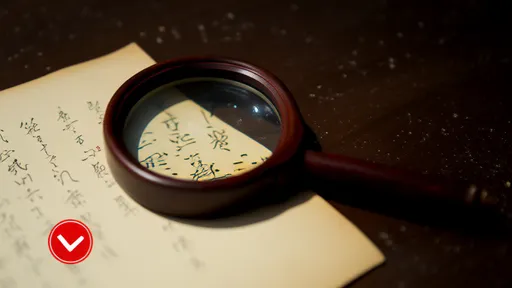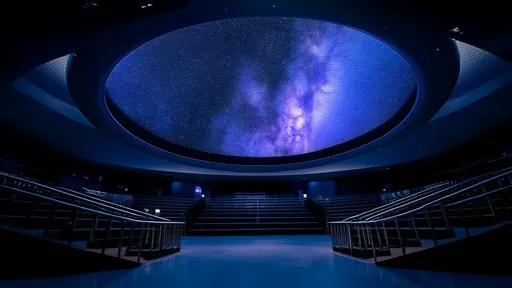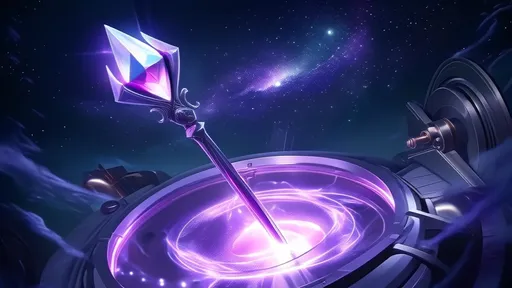The world of entertainment has witnessed a seismic shift in recent years with the rise of interactive experiences that blur the lines between fantasy and reality. Among these, the concept of "wand interactivity" has emerged as a particularly captivating trend, enchanting audiences across the globe. From theme parks to theatrical performances, the humble wand has transformed from a simple prop into a powerful tool of engagement, allowing participants to cast spells, manipulate environments, and become active participants in magical narratives.
At the heart of this phenomenon lies a combination of cutting-edge technology and timeless storytelling. Modern wand systems utilize a variety of technologies, including motion sensors, RFID chips, and augmented reality, to create the illusion of real magic. When a visitor waves their wand in a designated area, the environment responds—lights flicker, objects move, and hidden surprises are revealed. This seamless integration of physical movement with digital effects creates a sense of wonder that transcends age and cultural barriers.
The origins of interactive wand experiences can be traced back to the early 2000s, when theme parks began experimenting with ways to deepen visitor immersion. However, it was the collaboration between creative designers and software engineers that truly unlocked the potential of this concept. Today, these systems are so sophisticated that they can recognize individual wands, remember user preferences, and even adapt experiences based on previous interactions. This level of personalization ensures that no two magical encounters are ever the same.
What makes wand interactivity particularly remarkable is its ability to foster social connections. Unlike solitary digital experiences, these magical interactions often work best when shared. Families collaborate to solve spell-casting challenges, friends compete to produce the most dramatic effects, and strangers bond over their shared sense of wonder. In an increasingly digital world, these tangible, communal experiences have become precious commodities.
Educational applications of wand technology have also begun to emerge, transforming classrooms into magical learning environments. Language teachers use spell-casting as a fun way to practice vocabulary, science educators demonstrate physics principles through magical effects, and history lessons come alive when students can "interact" with historical figures. This gamification of education proves particularly effective with younger learners, making difficult concepts more accessible and memorable.
The business implications of this trend are equally magical. Specialty wand shops have sprung up in tourist areas worldwide, offering everything from budget-friendly interactive wands to exquisite handcrafted collectibles. Some establishments even provide wand-making workshops where visitors can create personalized magical tools. The merchandise ecosystem surrounding interactive wands—from spellbooks to magical creature companions—has created a thriving sub-industry within the entertainment sector.
As the technology continues to evolve, so too do the possibilities for wand interactivity. Developers are experimenting with haptic feedback to make spell-casting feel more authentic, while others are integrating artificial intelligence to create more responsive magical environments. There's even research into using these systems for therapeutic purposes, helping patients with motor skill rehabilitation through carefully designed spell-casting exercises.
Yet for all its technological sophistication, the true magic of wand interactivity lies in its ability to rekindle a sense of wonder that many adults thought they'd lost. In those moments when a carefully aimed flick of the wrist makes a lantern glow or a fountain dance, the impossible feels within reach. This emotional resonance explains why what began as a niche entertainment concept has grown into a global phenomenon, captivating millions and showing no signs of slowing down.
The future of wand interactivity appears bright, with new applications constantly being discovered. As augmented reality technology becomes more advanced and accessible, we may soon see interactive magic experiences moving beyond dedicated venues and into public spaces. Imagine casting spells to interact with street art, or using your wand to reveal hidden stories in historical locations. The line between our world and the magical one continues to blur, promising ever more enchanting experiences for generations to come.

By /Aug 13, 2025

By /Aug 13, 2025

By /Aug 13, 2025

By /Aug 13, 2025

By /Aug 13, 2025

By /Aug 13, 2025

By /Aug 13, 2025

By /Aug 13, 2025

By /Aug 13, 2025

By /Aug 13, 2025

By /Aug 13, 2025

By /Aug 13, 2025

By /Aug 13, 2025

By /Aug 13, 2025

By /Aug 13, 2025

By /Aug 13, 2025

By /Aug 13, 2025

By /Aug 13, 2025

By /Aug 13, 2025

By /Aug 13, 2025